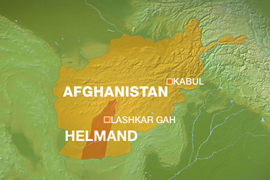Afghan ‘civilians’ killed in raid
US-Afghan forces claim that most victims were “terrorists”.

Accounts about who was killed in the pre-dawn raid in Dornami village are conflicting and an investigation is being carried out.
Differing reports
Residents say the US-led force, backed by Afghan troops, broke into a house, drawing fire from the occupants who thought they were thieves. Four people were killed and several wounded, all of them civilians, they said.
The US-led coalition said in a statement that the raid killed four suspected terrorists and a young girl.
The troops requested the surrender of those in the compound.
“The suspected terrorists refused to comply with verbal warnings and began firing,” the statement said.
“Enemies of the Afghan government continue to place women and children in harm’s way by conducting illegal activities within common living areas, placing entire families at risk.”
The US-led coalition has about 8,000 troops under its command in Afghanistan, after overthrowing the Taliban government in 2001. Nato leads about 32,000 soldiers in the country.
Thousands of civilians have been killed during fighting since the Taliban’s removal from power. Civilian deaths are a sensitive issue for the foreign forces and Hamid Karzai’s government, which largely relies on foreign funds and on foreign soldiers.
Suicide bomber
 |
| Helmand is Afghanistan’s main drug-growing region |
Four police officers, two soldiers and two civilians were killed in the suicide attack on the governor’s compound in Lashkar Gah, the provincial capital of Helmand on Tuesday.
Mohammad Daud, Helmand’s governor, was not wounded, officials said.
“It was a suicide attack and the target was the governor,” Mohammad Nabi Mullahkhail, Helmand police chief, said.
There was no immediate claim of responsibility for the attack, but Taliban forces have carried out many such raids across the country this year.
The province is part of the Taliban’s heartland and the main drug-growing region of Afghanistan, the world’s leading producer of heroin.